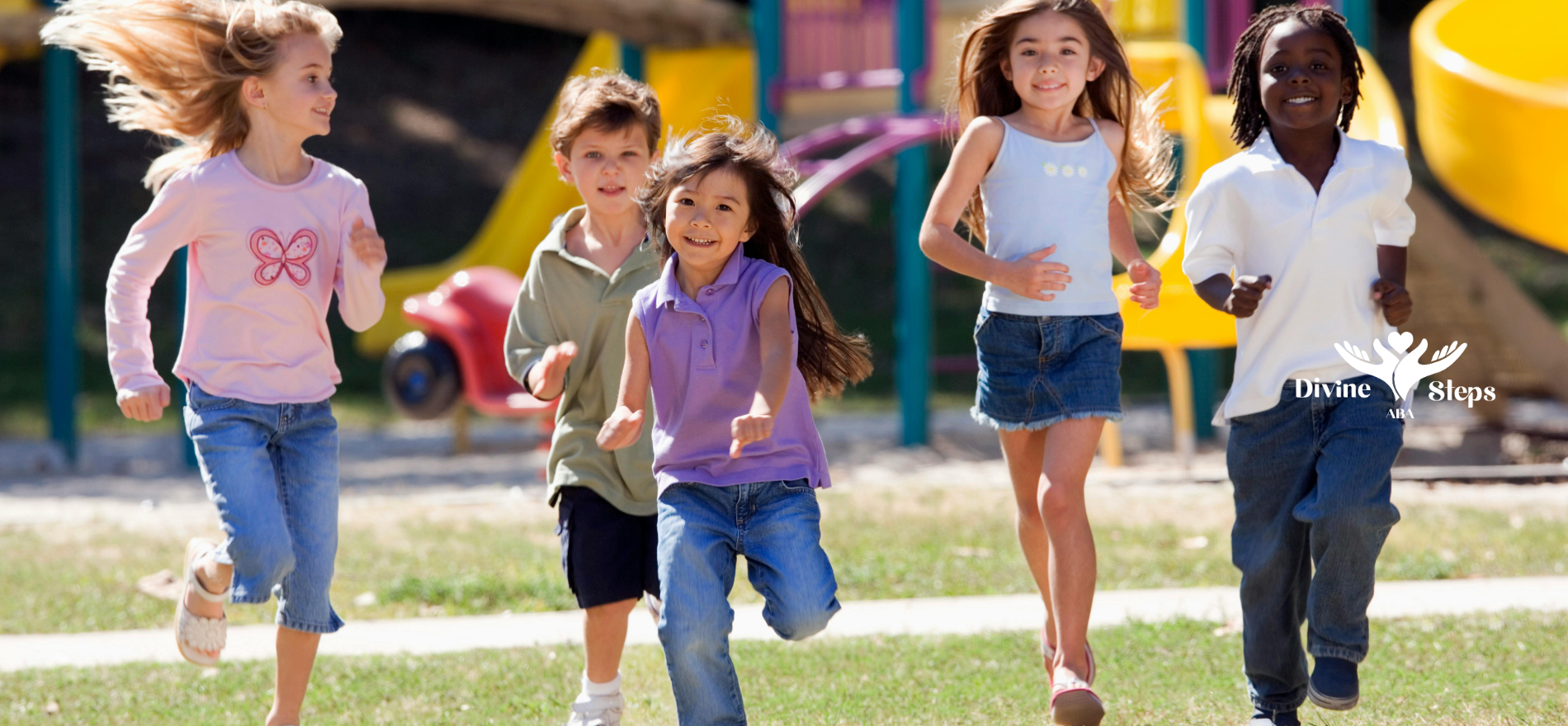Website by CWS
Comprehensive Treatments for Autism in Kids: A Guide
Every child with autism is unique, and so is their journey. While there’s no single “cure” for autism, there are proven therapies that can help children grow, communicate, and thrive.
One of the most widely recommended approaches is Applied Behavior Analysis (ABA) therapy, which focuses on building essential life and social skills.
In this blog, we’ll explore the most effective autism treatments for kids and how services like ABA can support your child’s development.
Core Treatment Approaches for Autism
Treating autism requires a combination of methods to reduce the symptoms of ASD. This approach also helps improve functional independence. Early intervention programs focus on building communication and social skills. This helps children adjust better to daily activities.
Key methods like behavioral therapy, speech therapy, and occupational therapy tackle specific challenges. Medicine, guided by doctors, can also help stabilize behavior. All these treatments work together to help a child have a better quality of life.
Importance of Early Intervention in Autism Treatment
Early intervention is very important for treating autism. It helps build a strong base for better results. Starting treatment when a child is young makes it possible to use effective intervention strategies. These strategies can improve thinking, social skills, and daily living skills.
Programs designed for young children focus on skill growth. They help with communication and changes in behavior. When therapies begin early, the quality of life gets better. Children can join everyday activities and interact socially.
Research shows that focused early intervention, like behavioral therapy, for at least two years before kindergarten can lead to big improvements. Quick diagnosis and action give children the tools they need to handle challenges, helping them reach their developmental milestones.
Overview of Behavioral Therapies for Autism
Behavioral therapy is very important in treating autism. It helps children learn skills and reduce disruptive behaviors. One popular method is Applied Behavioral Analysis (ABA). This method teaches kids the behaviors we want them to have in small and easy steps.
Intensive Behavioral Intervention (IBI) is focused on young children under five. It uses structured sessions to work on important areas like communication and social skills. The Lovaas Model also uses ABA methods but is tailored for children between two and eight years old.
| Behavioral Therapy | Key Features |
|---|---|
| Applied Behavior Analysis (ABA) | Reinforces positive behaviors and discourages negative ones. |
| Intensive Behavioral Intervention | Tailored for younger children under five with structured teaching methods. |
| Lovaas Model | Aims for improvement through structured early intervention programs. |
These therapies fit into a child's daily life. This helps kids learn in a way that lasts over time.
In-Depth Look at Behavioral Interventions
Behavioral interventions are powerful tools. They focus on understanding actions and changing them using strategies that are supported by evidence. These methods help people develop skills and tackle issues like impulsive behaviors or repetitive actions.
Feedback, rewards, and customized techniques are key parts of these interventions. They help track progress in a clear way. From basic ideas of ABA to specific programs like Pivotal Response Training, behavioral interventions improve a child's ability to adapt. They also open the door for greater benefits in their growth.
Applied Behavior Analysis (ABA) Techniques
Applied behavior analysis (ABA) uses different strategies to help children with autism spectrum disorder improve their communication skills and social interactions. One method is positive reinforcement, which encourages good behaviors. Another is modeling, where young children learn by watching their peers.
Visual supports are also helpful for understanding and doing daily living skills. By adjusting the support to what the child likes, ABA helps them learn new skills slowly in natural settings. This approach can really improve their quality of life and help them become more independent.
Role of Pivotal Response Training (PRT) in Autism
Pivotal Response Training (PRT) is a helpful method aimed at improving important parts of a child's growth. It focuses on motivation, social interactions, and communication skills. PRT helps children with autism spectrum disorder learn new skills in a more natural way.
The training usually happens in natural settings, mixing new behaviors with everyday activities. This approach not only helps children connect better with their peers but also supports their functional independence. Overall, PRT makes a big difference in their quality of life.
Supportive Therapies to Enhance Development
Supportive therapies provide children with autism the tools they need for everyday life. Language therapy helps them communicate better, making social interactions easier.
Occupational therapy focuses on sensory integration and motor skills. It helps kids become independent and succeed in daily activities. These therapies work well with behavioral strategies and form a strong support system. This allows children to reach important developmental milestones.
Speech and Language Therapy for Communication Skills
Speech therapy is important for helping children with ASD improve their communication skills. It focuses on both talking and non-talking ways of interacting. Licensed speech-language pathologists (SLPs) create special programs for each child’s needs.
For children who do not speak, tools like gestures, sign language, or pictures help them share their thoughts. For verbal children, different methods are used to improve their language skills. This helps them engage better with their peers and support personnel.
By teaching practical communication skills in natural settings, speech therapy helps children express their needs. It also allows them to take part meaningfully in everyday conversations.
Occupational Therapy to Improve Daily Skills
Occupational therapy (OT) helps improve daily living skills and supports sensory integration for young children with autism spectrum disorder. It works on fine motor skills that kids need for activities like dressing, using utensils, and handwriting.
Children with ASD often feel overwhelmed by sensory inputs. OT includes exercises that help them respond better to different stimuli. This can make them feel more comfortable and independent in various places. Special programs for older children focus on building social skills and helping them interact with other kids.
Occupational therapists use individual evaluations to find goals that are easy to reach. This helps each child become more independent, allowing them to make progress at their own pace.
Conclusion
In conclusion, understanding autism in children needs a complete approach that includes different methods of treatment. By spotting the signs of Autism Spectrum Disorder (ASD) early, parents can use key methods like behavioral therapies. This helps to greatly improve their child's quality of life.
Helpful therapies, like speech and occupational therapy, also support development and everyday skills. They give children the tools they need to succeed. Keep in mind that every child is different. Finding the best mix of treatments can take time.
At Divine Steps ABA, we specialize in personalized ABA therapy tailored to meet each child’s unique needs. Our dedicated team uses evidence-based strategies to help children thrive socially, emotionally, and academically. Remember, every child is different, and finding the right combination of treatments can take time.
If you're looking for expert guidance on your child’s journey, contact Divine Steps ABA today for a free consultation—we’re here to support you every step of the way.
Frequently Asked Questions
What is the best treatment for an autistic child?
There is no single treatment that works for all children with autism. Each child can gain the most from personal evaluations by a qualified physician. Behavioral therapy, like ABA, medical options for dealing with symptoms, and supportive therapies such as speech and occupational therapy can be very effective based on the child’s unique needs and challenges.
When should I start ABA therapy for my child?
The earlier, the better. Research shows that early intervention—especially before the age of 5—can lead to significant improvements in communication, behavior, and learning. If you’ve noticed signs of autism or have a diagnosis, starting ABA therapy as soon as possible can make a meaningful difference. Divine Steps ABA offers early intervention programs to support children right from the start.
How is ABA therapy customized for each child?
At Divine Steps ABA, we begin with a detailed assessment to understand your child’s strengths, challenges, and developmental goals. Based on this, we create a personalized therapy plan that includes one-on-one sessions, progress tracking, and family involvement. No two children are the same, and our individualized approach ensures your child receives the support they truly need.
Sources:
- https://www.cdc.gov/autism/treatment/index.html
- https://www.mayoclinic.org/diseases-conditions/autism-spectrum-disorder/diagnosis-treatment/drc-20352934
- https://my.clevelandclinic.org/health/articles/autism-therapies
- https://eurjmedres.biomedcentral.com/articles/10.1186/s40001-024-01916-2
- https://www.ncbi.nlm.nih.gov/books/NBK573609/
- https://www.autismspeaks.org/pivotal-response-treatment-prt




